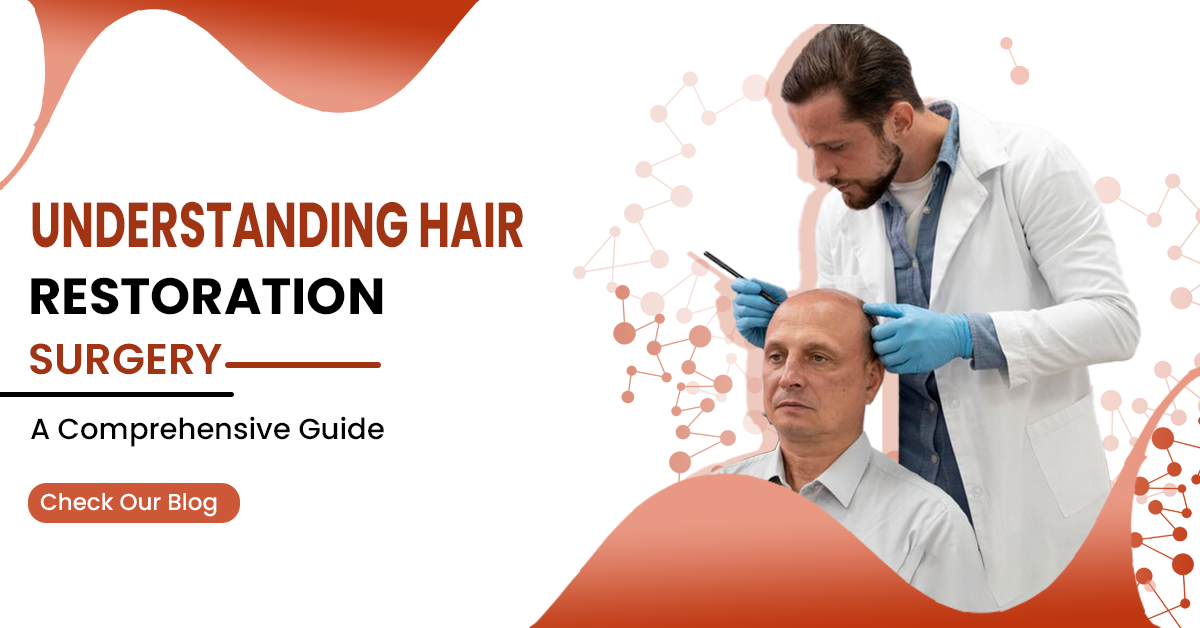
If you’ve found yourself considering hair restoration surgery, you’re not alone. Many individuals grapple with the impact of hair loss, and seeking a viable solution is a natural step. In this comprehensive guide, we aim to shed light on the intricacies of hair restoration surgery, providing you with the information you need to make an informed decision about this transformative procedure.
What Is Hair Restoration Surgery?
Hair restoration surgery, also known as hair transplant surgery, is a medical procedure designed to address hair loss. It involves the removal of hair follicles from one part of the body (usually the back or sides of the scalp, where hair is more resistant to balding) and their transplantation to areas with thinning or no hair.
Assessing Candidacy
Before delving into the details of the procedure, it’s crucial to determine whether you’re a suitable candidate for hair restoration surgery. Ideal candidates typically have:
- Stable Donor Areas: Hair is usually harvested from the back or sides of the head, where hair loss is minimal.
- Good General Health: Like any surgical procedure, hair restoration surgery requires good overall health for a smooth recovery.
- Realistic Expectations: It’s essential to have a realistic understanding of the potential results and limitations of the procedure.
Understanding Different Techniques
- Follicular Unit Transplantation (FUT): This method involves removing a strip of scalp from the donor area and dissecting it into individual follicular units for transplantation.
- Follicular Unit Extraction (FUE): FUE involves harvesting individual hair follicles directly from the donor area, typically using a micro-punch tool.
- Robotic Hair Restoration: Some procedures utilize robotic systems for precision in harvesting and transplanting hair follicles.
The Surgical Process
- Consultation: The journey begins with a thorough consultation where the surgeon assesses your candidacy and discusses your goals and expectations.
- Donor Area Harvesting: In FUT, a strip of scalp is removed, while FUE involves extracting individual follicular units. The choice depends on factors such as the extent of hair loss and personal preferences.
- Recipient Site Preparation: The surgeon makes tiny incisions in the recipient area, where the harvested follicles will be transplanted.
- Transplantation: Individual hair follicles are carefully placed into the recipient sites, ensuring a natural-looking result.
Post-Surgery Care
- Medical Instructions: Adhere to the post-surgery instructions provided by your surgeon, including medications and care routines.
- Avoid Strenuous Activities: Give your body time to heal by avoiding strenuous activities that could strain the surgical sites.
- Patience is Key: Hair growth takes time. Be patient, as visible results may take several months.
Realistic Expectations
While hair restoration surgery can provide significant improvements, it’s important to maintain realistic expectations. Factors such as the extent of hair loss, the quality of donor hair, and individual healing processes can influence the outcome.
Conclusion
Embarking on the journey of hair restoration surgery is a personal decision that requires careful consideration. By understanding the process, assessing your candidacy, and having realistic expectations, you can make informed choices that align with your goals. If you’re considering hair restoration surgery, consult with a qualified professional to explore your options and ensure the best possible outcome for your unique situation. Remember, a well-informed decision is the first step toward regaining not just your hair but also your confidence. Ready to take the first step towards hair restoration? Contact us now for a personalized consultation and embark on your journey to regaining confidence.

No Comments